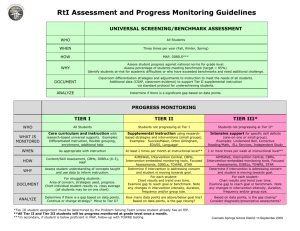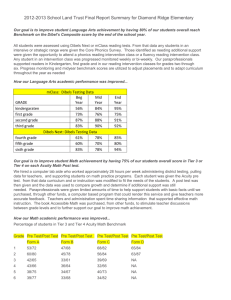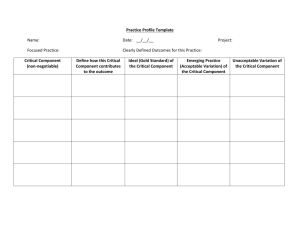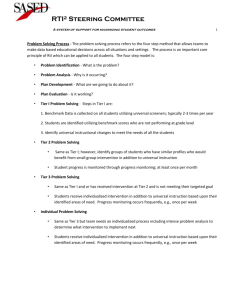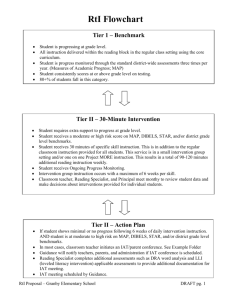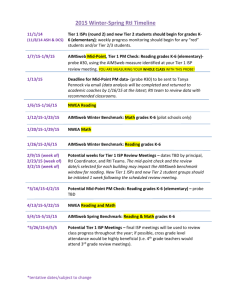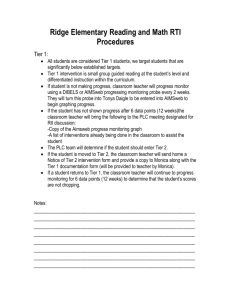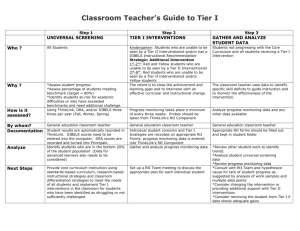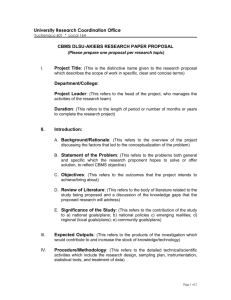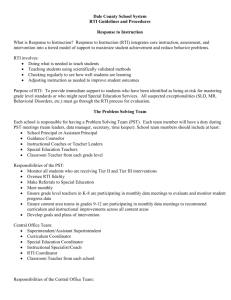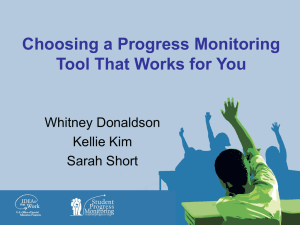Classroom Teacher`s Guide Sept 09F
advertisement
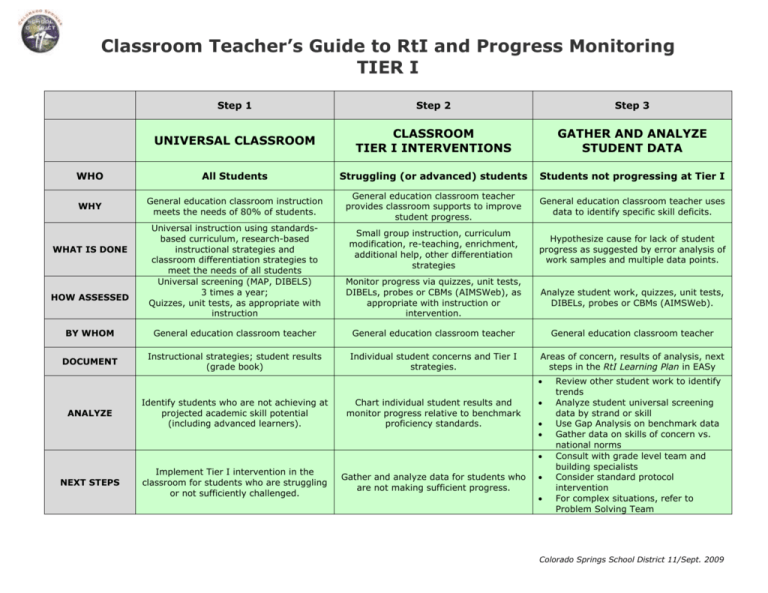
Classroom Teacher’s Guide to RtI and Progress Monitoring TIER I Step 1 Step 2 Step 3 UNIVERSAL CLASSROOM CLASSROOM TIER I INTERVENTIONS GATHER AND ANALYZE STUDENT DATA WHO All Students Struggling (or advanced) students Students not progressing at Tier I WHY General education classroom instruction meets the needs of 80% of students. General education classroom teacher provides classroom supports to improve student progress. General education classroom teacher uses data to identify specific skill deficits. Universal instruction using standardsbased curriculum, research-based instructional strategies and classroom differentiation strategies to meet the needs of all students Universal screening (MAP, DIBELS) 3 times a year; Quizzes, unit tests, as appropriate with instruction Small group instruction, curriculum modification, re-teaching, enrichment, additional help, other differentiation strategies Hypothesize cause for lack of student progress as suggested by error analysis of work samples and multiple data points. Monitor progress via quizzes, unit tests, DIBELs, probes or CBMs (AIMSWeb), as appropriate with instruction or intervention. Analyze student work, quizzes, unit tests, DIBELs, probes or CBMs (AIMSWeb). BY WHOM General education classroom teacher General education classroom teacher General education classroom teacher DOCUMENT Instructional strategies; student results (grade book) Individual student concerns and Tier I strategies. Areas of concern, results of analysis, next steps in the RtI Learning Plan in EASy WHAT IS DONE HOW ASSESSED ANALYZE Identify students who are not achieving at projected academic skill potential (including advanced learners). Chart individual student results and monitor progress relative to benchmark proficiency standards. NEXT STEPS Implement Tier I intervention in the classroom for students who are struggling or not sufficiently challenged. Gather and analyze data for students who are not making sufficient progress. Review other student work to identify trends Analyze student universal screening data by strand or skill Use Gap Analysis on benchmark data Gather data on skills of concern vs. national norms Consult with grade level team and building specialists Consider standard protocol intervention For complex situations, refer to Problem Solving Team Colorado Springs School District 11/Sept. 2009
